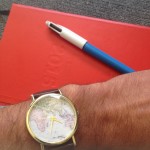There was a joke that went around my home town that when you arrived at the airport (that was really just a long flat paddock used by Emergency and rescue services) the pilot would say: “Welcome to Cootamundra, today is a mild 45 degrees in the shade, the local time is 3:15 and travellers are reminded to turn their watches back 50 years.
Lately I’ve been thinking about the effects that communication technology has on “community”. That we are supposedly globally connected, yet significant populations within the developed world are being caught or left behind. Modern communication has the ability to merge place, link cultures and even transcend language while creating massive communication cleavages between urban and rural, wealthy and poor. I didn’t have the internet in any household during my high-school years. Few in my year had dial-up, even less had wifi, and those who did had a parent who travelled to the city for work.
That’s not to say that we had no use for it – it would have helped my studies and could make great improvements to the community, particularly through the primary industries. The main reasons were: the price, the subpar speed, the availability and the marketing. The internet was not sold as a necessity as it is here in Melbourne, it was seen as a bonus, a gift, an optional extra for a successful family. Everybody truly believed that life would be no different. The power of information sharing is in numbers, which we did not have. If we were to upload information of our livestock sales, our harvest yields, the successes and failures of processes who would this information be useful to? Where could we find useful information for us? We could communicate with other dairy farmers, other wheat growers, in the Gippsland for example, but their situation and their environment is too different to ours for methods to be translated.
Looking there now, there has been a modernisation of communications, more households using the internet. And the reason is business. First people started to realise that they could order gifts and products online – from anywhere. People would do their weekly grocery shopping by correspondence to save the 2 hour round trip to the nearest Coles. Gradually small local businesses and franchises modernised their techniques of marketing and selling. Children of families began to research their assignments online, became involved with social media and introduced the rest of the world to our town. Last year when I was share-housing with friends the first question they would ask was always, “how fast is the internet?”
